The Reasons Branding Confuses You and How To Fix That Right Now
Awhile back, I wrote an article, Branding 101, which detailed the basics for writers what branding is all about. Read that first if you haven’t yet, then come on back. over. This branding article by professor, author, and Forbes writer David Vinjamuri is also quite helpful.
What Do You Think Branding Is?
In talking with writers and bloggers, I asked them what they think author branding means. Here are some responses (from a recent Facebook post):
- “I’m not sure what to share and how to tie it into my book. It’s supposed to be about my book. Right?”
- “I think it’s about expectations, but I want to subvert tropes. So it’s not so much about me as what I write.”
- “I struggle with this because I don’t want to be a ‘brand.’ That’s tedious. I just want to write.”
- “To be read, we need a brand. We need to teach readers why they want to read our books.”
- “Branding is about keeping visuals similar. Fonts, and colors, and things like that. That’s about all I know.”
- “It’s about being available on social media.”
- “It’s about consistency and expectations and being true to yourself. How I’m supposed to do that, though? Um, Canva?”
- “Branding is about where you want to go. What do you envision for yourself, you, the author? That’s what you need to focus on.”
I think you’ll agree with me when I say what branding is and what it’s not is not clear at all to most writers (it wasn’t to me when I first started out, either). I promise you, it’s not that complicated! There is an easier way.
Here’s what I have in store for you right now:
-
I’ll review what branding is,
-
what branding is not,
-
and present practical examples of successful author branding to help you get a clear picture you can use in your own author marketing.
What branding is:
- the way you want readers to see you because it’s who you are
- a way to manage readers’ expectations.
- a way for readers to identify your message and associate certain topics with you, the author.
- a way for you to deliver and discuss consistent topics
- a way to be authentically you by connecting with readers about topics that excite you, that you’re passionate about or are an expert in
- a way to build relationships with others based on common interests
- a way to share what makes you unique and build relationships with others based on that
- a way to strategically focus on your demographic to create an interactive reader dynamic
- the foundation of your entire author platform and your marketing
- authentic, consistent, and unique to you
Do you notice one word that is missing from every one of those bullet points? I’ll wait.
BOOKS.
Branding is not (solely) about your books. I know, right? Weird.
What branding is not:
- marketing. marketing is the tactics you use to connect to readers
- spamming book links constantly that say “Buy my books!”
- sending automated welcome messages which assume everyone is your reader (newsflash: everyone is not your reader)
- focused solely on your books
- one aspect of your platform, e.g., just social media or just blogging
- just about visuals
- set in stone and unchangeable
- something you take on and off, like your pants
- canned, fake, and common
Practical Branding Tips
So far, branding may still seem fairly nebulous and confusing, or a buzzword Mad Men came up with back in the 1950s (or the ever-present tired joke about cattle). I’m going to use my author account, RachelintheOC, as a case study here so you can see my branding in action. I’ll also mention other authors who are kickin’ it, so you can see their branding in action as well.
We’ll use:
- keywords/key phrases
- visuals
- blog posts
- articles I share
- social media examples
- avatar
- bios
If you’re still kinda foggy, here’s another simple, great definition: branding is strategic. marketing is tactical.
Keywords/Key Phrases
You may ‘just want to write,’ but I challenge that notion. Writing is great, which is why we’re authors, but don’t you want people to read what you’ve written? Don’t you want to make people think? Feel an emotion? Incite them to act?
What I recommend, when working with authors, aspiring or veteran, is to identify 5-6 interests, topics you are passionate or excited about in real life, and make those your keywords/phrases.
Think of it this way: if you’re at a dinner party and looking for discussion topics, what are your go-to subjects? Not small talk; I mean the meaty stuff you know about, are an expert in, topics you want everyone to know about? Climate change, cookie baking, pet rescue, woodworking, sewing, sports, cars, cats, movies, etc. Know how you create bonds quickly with people you’ve just met? It’s by hitting on common bonds of interest.
This is how you build relationships.
(Caution: even though it’s just about impossible right now, avoid discussing politics and religion unless you’re a well-known expert, your well-established keywords/keyphrases and author platform directly relate to politics and religion, and you have already established your branding through your writing and social media on these topics.
Why do I say this? It seems obvious but it’s not because writers have voices and we want to use them (believe me, I’m no exception): you risk alienating readers, book bloggers, and book reviewers–particularly on Facebook where people write novels about their opinions on politics.) If you’re OKAY with that, cool.
These keywords/phrases will change and are not set in stone, as you change and grow as a person and writer. However, set up your 5-6 to start (and pick 3-4 as ‘back-up’ keywords/phrases — topics you may not discuss all the time but still round you out as a person).
Another tip: think like the reader you are. You use Google all the time — what do you search for when you want to find a book? Then those are the words and phrases you want to apply to yourself.
My keywords/phrases for my author account are as follows:
- Sexual Abuse and Childhood Sexual Abuse (as I’m a survivor and advocate for others)
- Women’s Issues ***This verges into political territory and I’m well aware of that, yet I’m established in this area***
- Real Life
- Memoir/Poetry
- Relationships
- Mental Health
I also have ‘back-up’ keywords/phrases which are more fun and less serious. These are:
- Nutella
- Cats
- Cooking (well, joking about my ‘supposed’ lack of cooking skills)
- Humor
This sets expectations for readers. They know whether they come to my blog, social media, read a quote or an article I’ve shared, it will consistently be about one of these topics.
Visuals
Here are four of my book covers and my current social media header. This header is consistent on ALL of my RachelintheOC social media. My book covers all have red. That is my signature. My Broken books have the same font, and my author name is at the bottom in a band of red.
Blog Posts
If you head over to my RachelintheOC blog, you’ll see that my overall blog topic theme is Real Life. This goes for my blog posts as well as guests. Topics range from sexual abuse to relationships to mental health to women’s issues to survival and PTSD, etc. Again, all within my branding.
Articles
What do we share once we figure out our keywords and keyphrases? This is the easy and fun part! We can’t possibly create original content constantly or our brains would implode (or is that explode?). What to do? How do we find relevant, timely, interesting content that fits within our branding?
There are honestly hundreds of options to find great content, but I’m going to share what I use. *Note: These are not affiliated links and I receive no monetary compensation if you sign up for services. I’m not responsible if you do sign up and find the service unsatisfactory.
- Free: Google Alerts: Type in whatever keywords/key phrases you have chosen and set up daily or weekly news alerts. This is super easy and totally customizable.
- Free: RSS Feeds of your favorite sites. I use Chrome, so I picked the Feeder extension and added in the RSS feeds of sites I tend to go back to again and again.
- UpContent: I use the Pro version and while it takes a little bit of a learning curve to understand (which they walk you through with a phone call — great customer service), I’ve found their articles to be terrific.
- Right Relevance: I also use the Pro version through Hootsuite, so the cost is only $4.99/month which offers me unlimited articles for keywords and phrases I choose.
- Free Flipboard and ScoopIt!: both are free and allow you to find articles as well as customize and share articles you find.
Tip: If you use a social media management tool like Hootsuite or Buffer (both are great!), you can import these apps to pull the articles and schedule in a snap, and then it’s all in one place.
Social Media Examples
I typically share four types of social media posts:
- Visual quotes (mine and others)
- Blog posts (non-promotional)
- Articles (containing my keywords/keyphrases)
- Promotion
Here’s an example of each:
- Visual quotes (from Broken Places, my latest Rachel Thompson, Author release) — example on left. Visuals are important to share because they receive FAR more retweets, likes, and shares. See visual on right from CoSchedule.
- Blog Posts (non-promotional)
For Twitter: This is the Reason Writing Your Story Helps you Thrive http://ow.ly/AqCY30a1FbR by @RachelintheOC #SexAbuse #survivor
For Facebook, Linked In, and others: This is the Reason Writing Your Story Helps you Thrive http://ow.ly/AqCY30a1FbR by Rachel Thompson, Author #SexAbuse #survivor
- Articles (containing keywords/keyphrases)
Lovely and wise: On #Loss: Beautiful Letters of Consolation from Great Artists, Writers, and Scientists http://ow.ly/IVYh309U1oV via @brainpicker
Women Who Write: #Female Editors-in-Chief You Need to Know via @MAKERSwomen http://ow.ly/bUPq309XjHk #writing
- Promotion (my books)
5-star @ReadersFavorite The @BadRedheadMedia 30-Day #BookMarketing Challenge https://geni.us/30DayBkMktgChlgeBook #Amazon, just $4.99! “Get this book!” #BookMarketing #WritingCommunity
Avatar
It’s most important that you use your face in your avatar. Why? Humans are funny creatures. We start recognizing faces as babies. Notice how you can remember someone’s face, even if their name slips your mind? If we can’t associate a face with a name, we are immediately uncomfortable on an instinctual level.
A few other key points here:
- Use the same photo across all your channels. Remember, consistency is key to branding.
- Use a hi-resolution photo of your face. When people click on your avatar, you don’t want it to appear blurry.
- Don’t have a picture of you with 25 other people in a group or at a casual gathering (e.g., a wedding or skiing).
- Look professional. If your mouth is hanging open or your hair is askew, is that the image you want to project? Because that is what people will associate with you.
- No animals or weird creatures. Unless you are a weird creature, use your face.
- Logos are fine for businesses, but even then, people still prefer to see a face. It’s a trust thing.
Bios
Every social media channel gives you space for your bio. I go into specifics in my BadRedhead Media 30-Day Book Marketing Challenge, so I won’t do it here, but there are a few key points to remember that hold true no matter which channel you’re on:
- Don’t only say you’re an author or blogger. Use a verb: what will reading your book (or blog) DO for readers? (Mine ‘helps survivors feel less alone’).
- For Twitter, use a hashtag or two (but no more than that #or #your #bio #will #become #unreadable). Many shall we say, old-fashioned writers, are averse to using hashtags (“they’re ruining literature!”) but keep in mind, when you are on social media, you want to be as visible as possible. By using hashtags, such as #author or #writer, you create a hyperlink and become more visible in Search.
- Hashtags are also commonly used in Search on all other social media channels (but may not hyperlink in bios).
- Be consistent. Provide a link to your website and/or book(s) on all bios.
- Use the same avatar.
- Use the same headers and visuals.
- If you update something on one bio, update it on ALL bios.
Here’s my author Twitter bio. You can see that I use hashtags for author, survivor, and a few of the chats I founded (remember, they hyperlink):
As you can see, all of this works together across my entire platform to create a seamless picture, if you will, of what interests me, what I’m passionate about, what I want to share with people, what connects me to others, and yes, what I write about. My branding is not difficult because I’m already writing about it (blogging, articles, guest posts, and my books), and that carries over to social media.
Branding Examples
Here are some other authors whose author branding is spot-on:
Evatopia Lit:
Sacha Black:
SugarBeatBC (Barb Drozdowich, Author):
A Final Word
Branding isn’t brain surgery. Find your voice, be consistent, and be authentic. We spend our whole lives ‘finding ourselves,’ and all that. Now that you have a chance to truly express yourself, don’t run from it — rock this shit.
The key to building relationships on social media is being generous — so retweet/share, comment, like, interact, and provide interesting content that’s not all about you all the time. Whether you ascribe to the 80/20 Rule or 30/30/30 or no rule at all, remember to mix it up, give back more than you take, and keep writing great books.
For a more detailed plan on developing your book marketing, purchase Rachel’s new book, The BadRedhead Media 30-Day Book Marketing Challenge now on Amazon and her brand new SEO mini-book — already #1 in 3 categories!
Already a 5-Star Reader’s Favorite!
[blurbit]
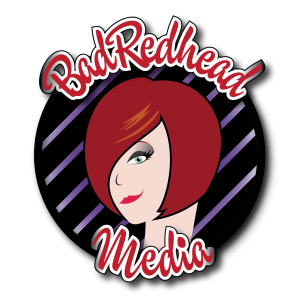
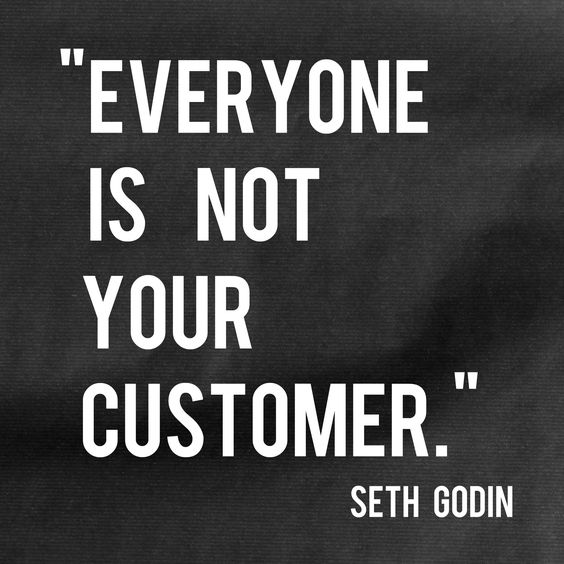
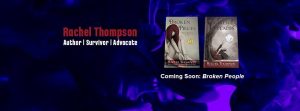

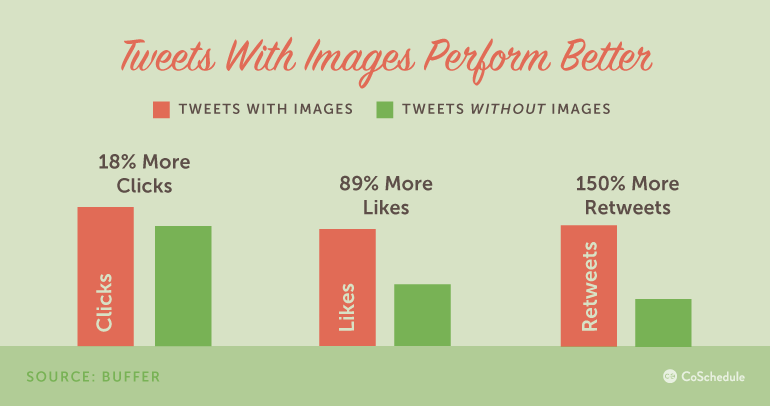
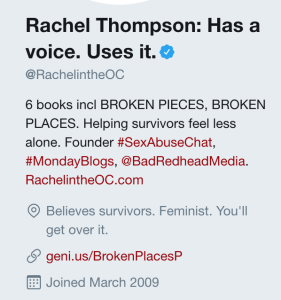
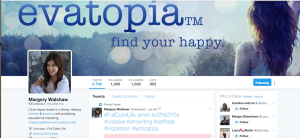
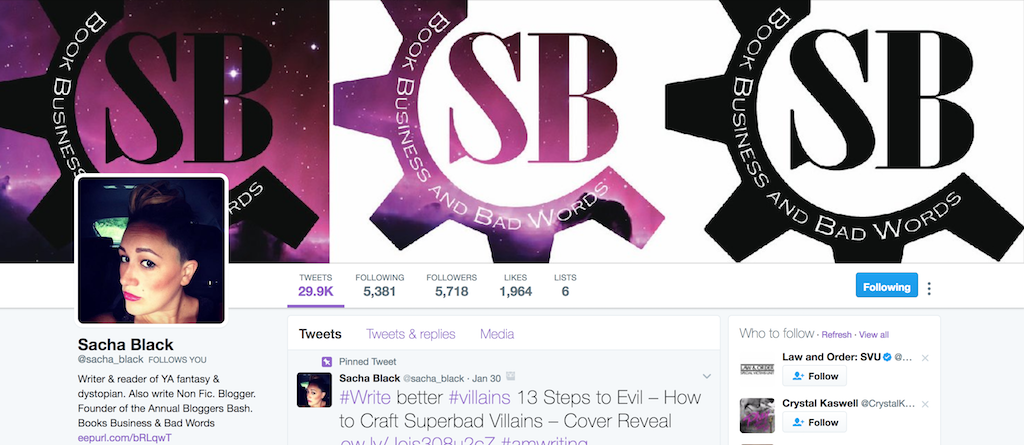
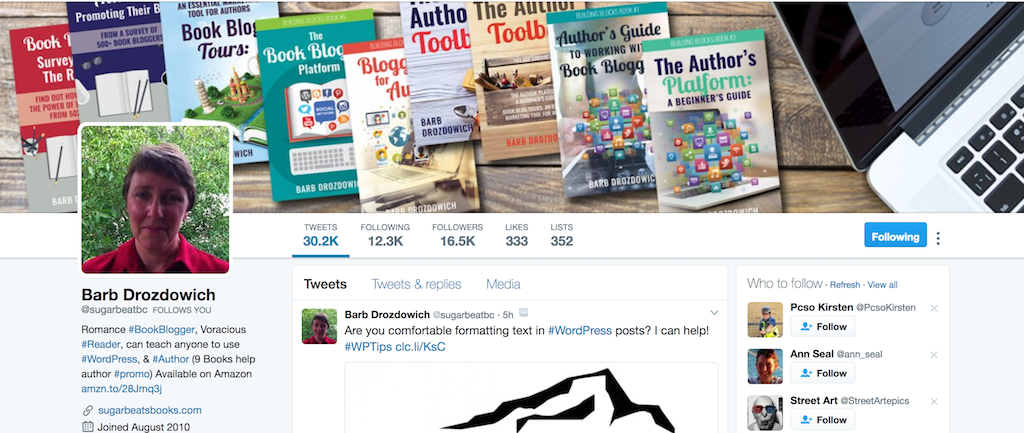
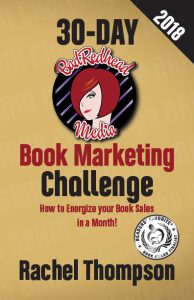
Thanks for clearly defining this somewhat confusing concept!!
This is the biggest question in my mind right now, so thanks for sharing all of this info. I definitely have some learning to do!
Great post. It was well worth the effort to read and try to define the answers for myself. 🙂
Wow, a wealth of knowledge available here and certainly worth implementing for our own branding conceptual vision, regardless of one’s business type.
Hi, Scott! So glad you made it over to take a look. Branding is absolutely a strategic concept anyone can apply to their product, service, or artistic endeavors (if they plan to sell them). Any questions, please let me know!
[…] well as her own social account, which, after investigation, was riddled with other people’s poetry passed off as her […]
[…] opportunities for you to let readers know what you do and who you are, so employ those. Make your branding clear. An automated message is a cockroach, and is, in all likelihood, causing you to lose […]
[…] you know what your keywords and branding […]
Wow…good article! Just getting my feet wet with Brand marketing, and using content marketing via social media to spread my brand awareness. You gave some nice tips:)
I think this is my favorite article so far. Good information on using keywords and hashtags. Still working out the bugs in my own website, but I have added this page to my favorites.